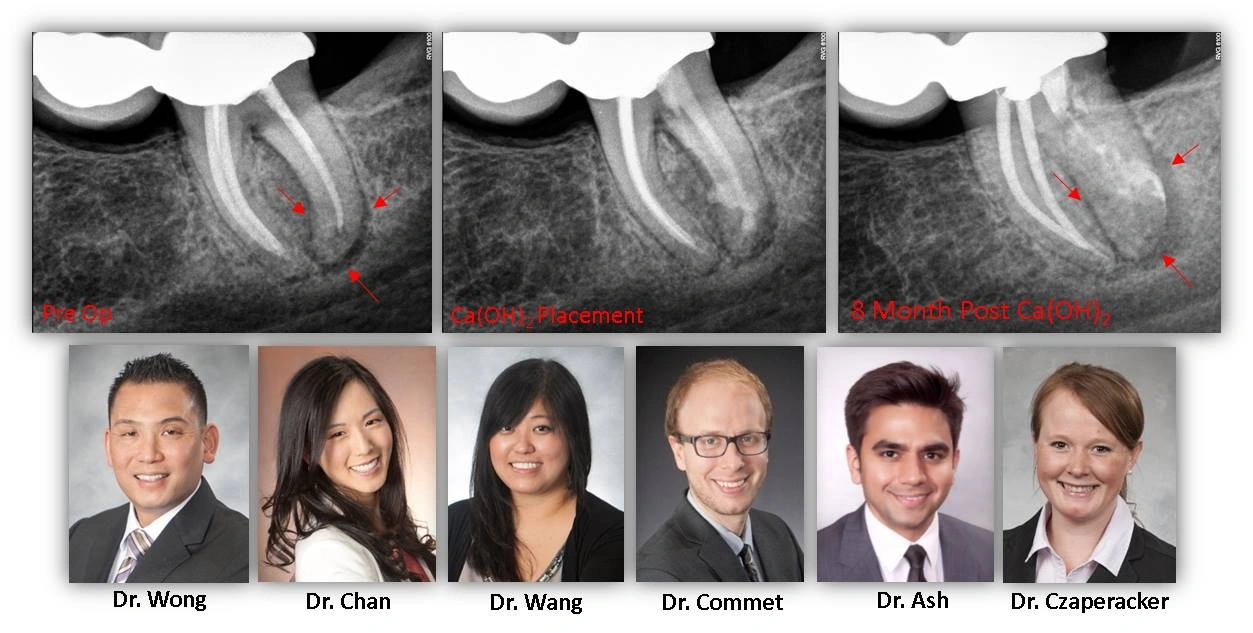VERTICAL ROOT FRACTURE

VERTICAL ROOT FRACTURE: This case was referred to us because a j-shaped periapical lesion was noted on routine radiographic assessment of tooth #18 by the patient’s general dentist. The patient denied history of pain or swelling. Tooth #18 is an abutment of a three unit FPD with intact margins, was sensitive to percussion, and tested within normal limits to palpation and periodontal probing. In absence of direct visualization of a crack or fracture, there was no definitive evidence of vertical root fracture. However, the possibility of vertical root fracture could not be ruled out as a possible etiology.
As the patient was motivated to save the tooth at all costs, selective retreatment of the distal root with long-term (8 week) calcium hydroxide application was recommended. If upon re-evaluation at the 8 weeks, sensitivity to percussion and size of the periapical lesion improved, vertical root fracture could be more confidently ruled out, and endodontic retreatment could be completed.
Table of Contents
Post Appointment
At the 8 week evaluation appointment, three important findings were noted:
1. Temporary restoration was intact
2. Periapical lesion persisted
3. Calcium hydroxide was completely washed out of the canal
These three factors demonstrate that there must be a communication or fracture within the root canal system. Consequently the patient was advised that the tooth is non-restorable and recommended for extraction.
TAKE HOME MESSAGE: The presence of a j-shape lesion was likely consistent with vertical root fracture. However, this is NOT ALWAYS the case. If a patient is motivated to save the tooth, the tooth can be deconstructed and medicated for further evaluation. The key to diagnosis in this case was comparing quality pre-op, immediately after calcium hydroxide application, and 8 month post calcium hydroxide application radiographs.